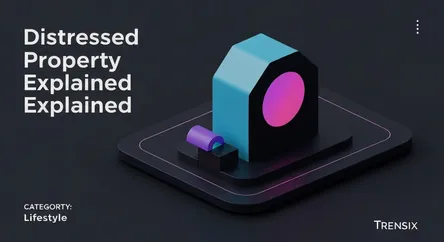Lifestyle
Distressed Property Explained

Learn what distressed properties are, including foreclosures and short sales, and discover the opportunities they offer for savvy buyers and investors.
What is it?
A distressed property is a home on the brink of foreclosure or already owned by a lender because the owner has failed to make mortgage payments or pay property taxes. The term covers pre-foreclosures, short sales (where the bank accepts less than the mortgage balance), and Real Estate Owned (REO) properties, which are bank-owned after a failed foreclosure auction. These homes are typically sold below market value to facilitate a quick sale, often in "as-is" condition, meaning they may require significant repairs or renovations by the new owner.
Why is it trending?
Amid fluctuating economic conditions and a competitive housing market, distressed properties are gaining traction. They offer a potential entry point for investors and first-time buyers who are priced out of the traditional market. The appeal lies in the opportunity to purchase a property for significantly less than its market value. Furthermore, the increasing availability of online platforms and specialized real estate websites dedicated to listing foreclosures and short sales has made these properties more accessible to a broader audience, fueling interest and investment in this real estate niche.
How does it affect people?
For buyers and investors, a distressed property can be a high-risk, high-reward opportunity to build substantial equity. However, it often involves a more complicated purchasing process and the potential for costly, unexpected repairs. For the homeowner facing foreclosure, it is a stressful and financially devastating event. For the surrounding community, a high number of distressed properties can potentially lower neighborhood property values. Conversely, when these homes are purchased and renovated by new owners, it can lead to the revitalization and improvement of the entire area.